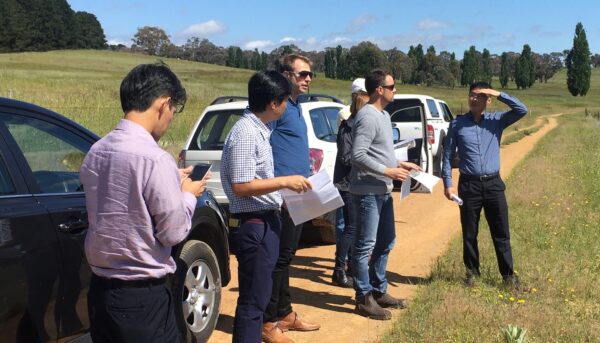Water sensitive design through international collaboration
Ginninderra is proposed to become a test-bed for the latest innovation in water sensitive urban design and infrastructure through an international collaboration between CSIRO and the Korea Institute of Civil Engineering and Building Technology.
As a generally dry country, Australia perpetually faces issues of water availability, storage and prudent use, according to Senior Principal Research Scientist with CSIRO Land and Water, Dr Simon Toze.
“A focus of our water management is to increase water availability in rural and urban environments for both human and environmental purposes,” says Simon. “In Australia we tend to have broad strategies and initiatives to capture, recycle and reduce the use of water where possible.”
“By contrast in Korea, where rain-fed water is relatively abundant, water sustainability issues relate mostly to improving the quality of environmental water. Korea tends to focus on mechanisms to treat and clean environmental waterways or to add recycled water and cleaned urban stormwater to increase environmental flows.”
Despite these differences, Australia and Korea share common interests in managing water quality and preventing contamination.
Both countries are experiencing issues relating to existing urban developments and the corresponding human and ecological impacts. Changes in climate, increasing urbanisation and growing population, along with increasing needs to protect and improve the local environments, are placing greater demands on regulators and urban planners.
In view of such common issues and complementary research skills and capabilities, Australia and Korea have taken key steps to bolster their collaboration and it is hoped that the Ginninderra initiative will be a prime beneficiary.
A Memorandum of Understanding signed in 2016 between CSIRO Land and Water and the Korea Institute of Civil Engineering and Building Technology (KICT) establishes a collaboration project. The project: ‘Integrated drainage and supply through water sensitive design’ is supported by the Australian Government through the Australia-Korea Foundation of the Department of Foreign Affairs and Trade.
“As we work to combine and exchange the complimentary capabilities and research skills of each organisation, the benefits could be very significant for each country,” says Simon.
KICT research tends to focus on water engineering and treatment capabilities, while CSIRO has a wealth of skills and knowledge related to water quality, treatment assessment and water use efficiencies.
“Following our Australia-Korea Foundation Workshop in November 2016, we are proposing to work together at Ginninderra through an ‘Urban Living Lab’ to be a test bed for potential broad application of knowledge, technologies and infrastructure.”

Participants in the Australia-Korean Foundation Workshop met at CSIRO and
visited Ginninderra and various urban water management sites in Canberra
CSIRO Urban Living Labs are being set up in a number of Australian cities to encourage innovators from wide-ranging urban research backgrounds to come together to create, test and refine innovative products and services in a real-life setting, with the support of CSIRO and research partners. Some of the key activities and outcomes connected with Ginninderra are proposed to include:
- Developing the urban water design philosophy to be applied at Ginninderra
- Analysing, trialling and feasibility testing the effectiveness of specific water sensitive urban design / green stormwater infrastructure and Managed Aquifer Recharge facilities and
- Potentially applying the research findings from Ginninderra in the establishment of a new sustainable city (Sejong) in Korea.
Through the Australia-Korea Foundation project agreement, a follow-up workshop to develop the joint research activities is planned for Goyang, South Korea in February or March 2017.
